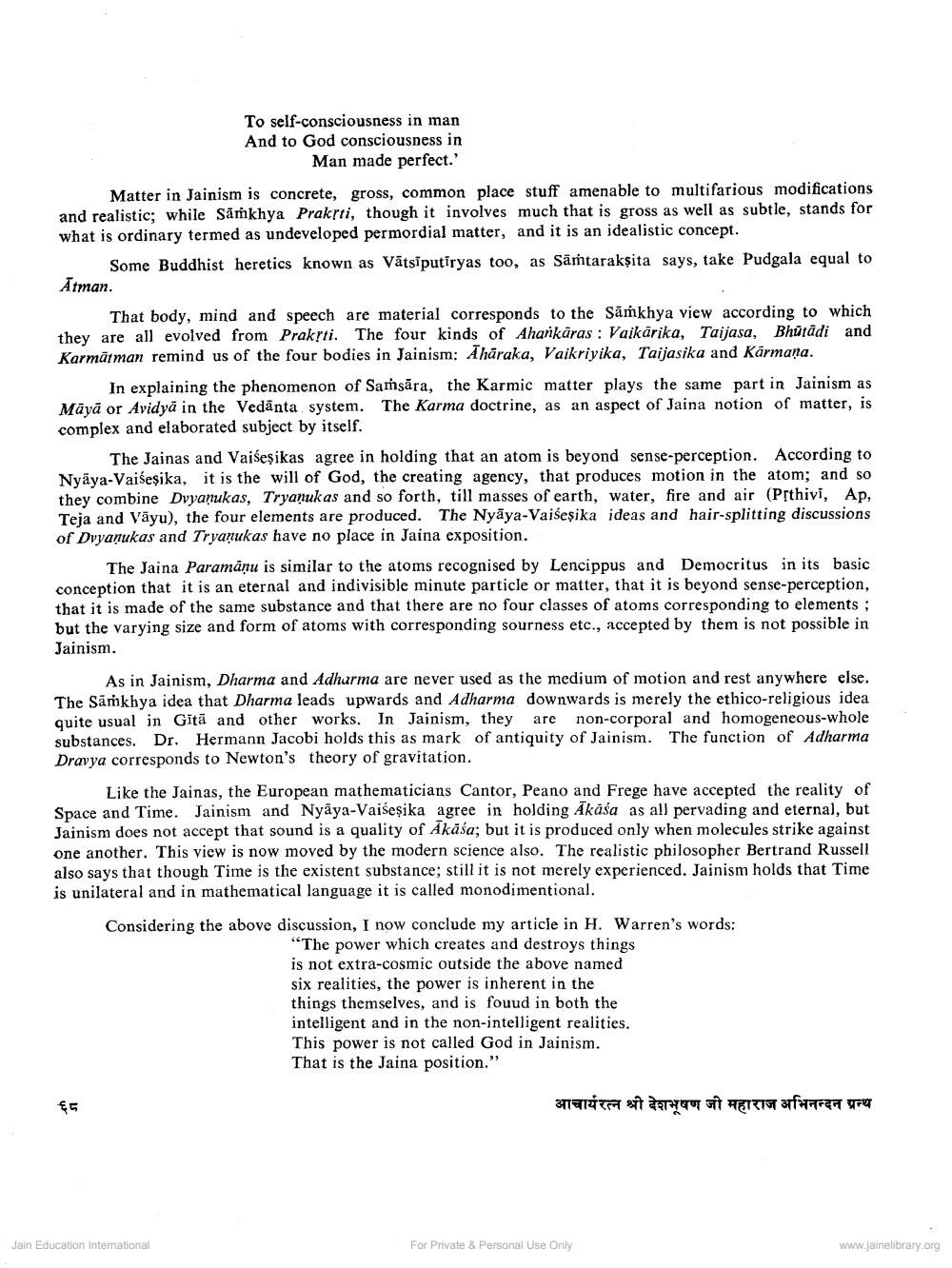________________
To self-consciousness in man And to God consciousness in
Man made perfect.' Matter in Jainism is concrete, gross, common place stuff amenable to multifarious modifications and realistic; while Sākhya Prakrri, though it involves much that is gross as well as subtle, stands for what is ordinary termed as undeveloped permordial matter, and it is an idealistic concept.
Some Buddhist heretics known as Vātsiputiryas too, as Sämtarakṣita says, take Pudgala equal to Atman.
That body, mind and speech are material corresponds to the Sārkhya view according to which they are all evolved from Prakrti. The four kinds of Aharkaras : Vaikärika, Taijasa, Bhūtādi and Karmātman remind us of the four bodies in Jainism: Ahäraka, Vaikriyika, Taijasika and Kārmana.
In explaining the phenomenon of Samsāra, the Karmic matter plays the same part in Jainism as Māyā or Avidya in the Vedānta system. The Karma doctrine, as an aspect of Jaina notion of matter, is complex and elaborated subject by itself.
The Jainas and Vaišeşikas agree in holding that an atom is beyond sense-perception. According to Nyāya-Vaišeşika, it is the will of God, the creating agency, that produces motion in the atom; and so they combine Dvyanukas, Tryanukas and so forth, till masses of earth, water, fire and air (Psthivi, Ap, Teja and Väyu), the four elements are produced. The Nyāya-Vaiśesika ideas and hair-splitting discussions of Duyanukas and Tryanukas have no place in Jaina exposition.
The Jaina Paramānu is similar to the atoms recognised by Lencippus and Democritus in its basic conception that it is an eternal and indivisible minute particle or matter, that it is beyond sense-perception, that it is made of the same substance and that there are no four classes of atoms corresponding to elements; but the varying size and form of atoms with corresponding sourness etc., accepted by them is not possible in Jainism.
As in Jainism, Dharma and Adhurma are never used as the medium of motion and rest anywhere else. The Sāṁkhya idea that Dharma leads upwards and Adharma downwards is merely the ethico-religious idea quite usual in Gitā and other works. In Jainism, they are non-corporal and homogeneous-whole substances. Dr. Hermann Jacobi holds this as mark of antiquity of Jainism. The function of Adharma Dravya corresponds to Newton's theory of gravitation.
Like the Jainas, the European mathematicians Cantor, Peano and Frege have accepted the reality of Space and Time. Jainism and Nyāya-Vaiseșika agree in holding Akaśa as all pervading and eternal, but Jainism does not accept that sound is a quality of Akāśa; but it is produced only when molecules strike against one another. This view is now moved by the modern science also. The realistic philosopher Bertrand Russell also says that though Time is the existent substance; still it is not merely experienced. Jainism holds that Time is unilateral and in mathematical language it is called monodimentional.
Considering the above discussion, I now conclude my article in H. Warren's words:
"The power which creates and destroys things is not extra-cosmic outside the above named six realities, the power is inherent in the things themselves, and is fouud in both the intelligent and in the non-intelligent realities. This power is not called God in Jainism. That is the Jaina position."
आचार्यरत्न श्री देशभूषण जी महाराज अभिनन्दन ग्रन्थ
Jain Education International
For Private & Personal Use Only
www.jainelibrary.org




